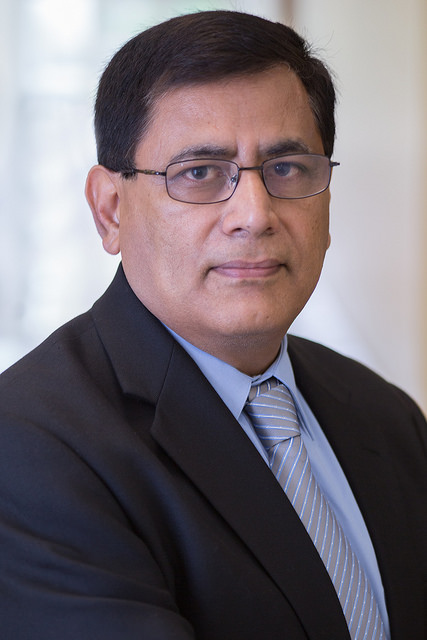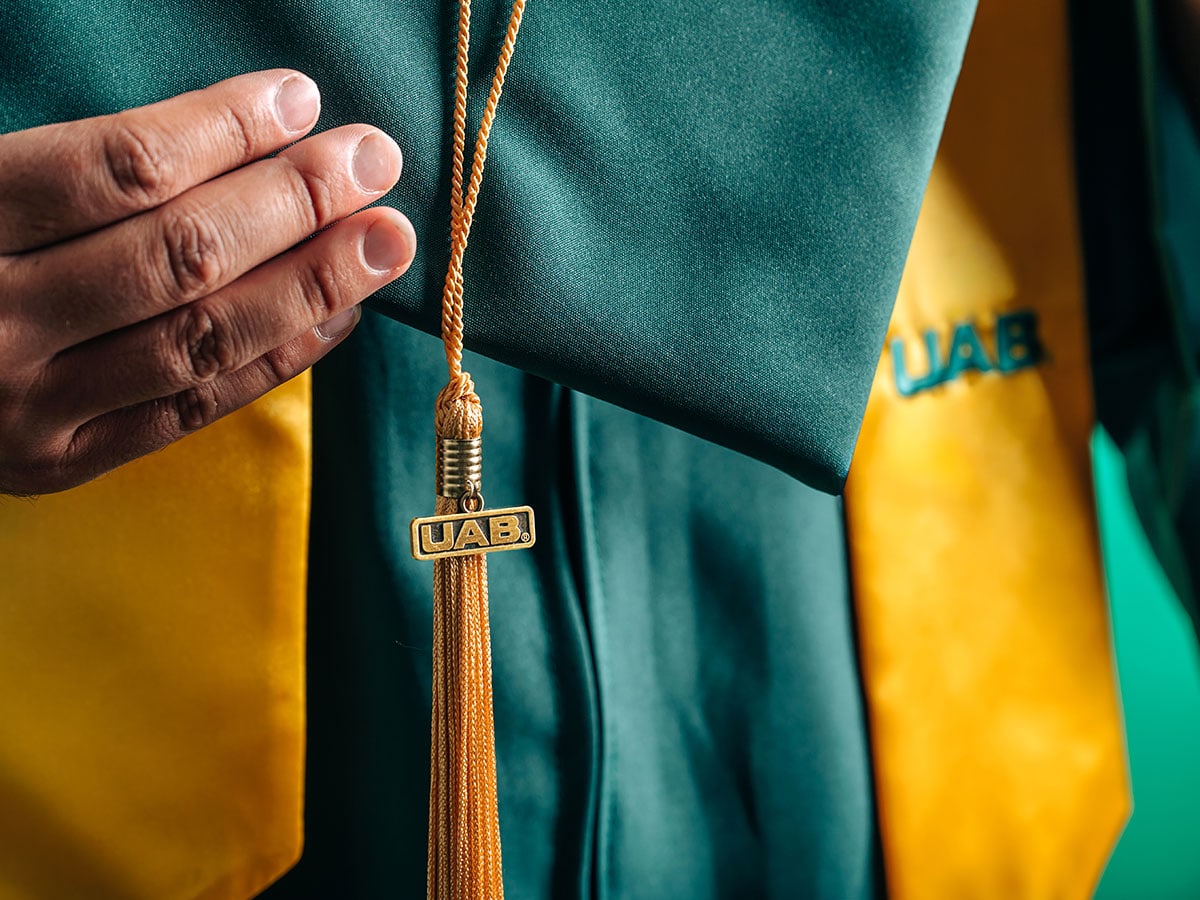 Yogesh Vohra, Ph.D., working with physics graduate student Chris Perreault.Nine Alabama universities and one private firm are partnered in a new $20 million, five-year effort led by the University of Alabama in Huntsville (UAH) to develop transformative technologies in plasma science and engineering (PSE) funded by the National Science Foundation (NSF) Established Program to Stimulate Competitive Research (EPSCoR).
Yogesh Vohra, Ph.D., working with physics graduate student Chris Perreault.Nine Alabama universities and one private firm are partnered in a new $20 million, five-year effort led by the University of Alabama in Huntsville (UAH) to develop transformative technologies in plasma science and engineering (PSE) funded by the National Science Foundation (NSF) Established Program to Stimulate Competitive Research (EPSCoR).
The grant is entitled “Future Technologies enabled by Plasma Processes” (FTPP) and will be for a five-year duration (2022-2027) to explore plasma synthesized novel materials, surface modified biomaterials, food safety and sterilization, and space weather prediction.
Yogesh Vohra, Ph.D., associate dean for University of Alabama at Birmingham’s (UAB) College of Arts and Sciences (CAS) and professor university scholar in the Department of Physics, serves as a co-principal investigator and UAB’s Institutional lead for this statewide award. The UAB research team, led by Vohra, includes the following members from the UAB Center for Nanoscale Materials and Biointegration (CNMB), which is based in CAS:
- Paul Baker, Ph.D.
- Renato Camata, Ph.D.
- Aaron Catledge, Ph.D.
- Cheng-Chien Chen, Ph.D.
- Wenli Bi, Ph.D.
- Vinoy Thomas, Ph.D.
Scott Snyder, Ph.D., professor in the UAB School of Education, will provide internal evaluation for this grant and will monitor management, statewide workforce issues, and internal projects.
The grant will support two postdoctoral research scholars at UAB—along with several graduate students—who will work synergistically with other academic institutions and an industrial partner in this consortium. In addition, the grant offers the opportunity for faculty, graduate students, and postdoctoral scholars to take the laboratory-based pilot synthesis of novel materials to their full commercial potential.
“The funding is the result of a team effort from the co-investigators in assembling the group, who generated the concepts and ideas underlying the proposal and executed the plan by writing a successful proposal,” said Gary Zank, Ph.D., FTPP’s principal investigator, director of UAH’s Center for Space Plasma and Aeronomic Research (CSPAR) and the Aerojet Rocketdyne chair of the Department of Space Science.
Although different in aims, research goals, and scope from a previous $20 million NSF EPSCoR grant awarded in 2017, the new FTPP grant will continue to build plasma expertise, research, and industrial capacity, as well as a highly trained and capable plasma science and engineering workforce, across Alabama.
 Yogesh Vohra. “Plasma is the most abundant form of matter in the observable universe. PSE is a technological and scientific success story, translating advances in fundamental plasma science to technologies that address society’s needs,” said Vohra. “UAB’s role in this consortium is to develop future transformational technologies enabled by PSE including data-driven approaches in plasma synthesized high-entropy and quantum materials.”
Yogesh Vohra. “Plasma is the most abundant form of matter in the observable universe. PSE is a technological and scientific success story, translating advances in fundamental plasma science to technologies that address society’s needs,” said Vohra. “UAB’s role in this consortium is to develop future transformational technologies enabled by PSE including data-driven approaches in plasma synthesized high-entropy and quantum materials.”
According to Vohra, the research team will employ machine learning techniques to speed up the process for materials discovery and guide the materials synthesis effort using microwave plasma chemical vapor deposition and plasmas generated by high-powered lasers. The plasma synthesized materials will be especially designed for their applicability in extreme environments, including elevated temperatures as well as thin-film superconductors which can be used in quantum information devices. An additional effort is devoted to plasma assisted metal nanoparticle deposition for their antimicrobial properties to be employed in biomedical devices for reduction in infection rates.
Partnered with UAH and UAB are the University of Alabama (lead: Dr. R. Branam), Auburn University (lead: Dr. E. Thomas), Tuskegee University (lead: Dr. V. Rangari), the University of South Alabama (lead: Dr. E. Spencer), Alabama A&M University (lead: Dr. R. Mentreddy), Alabama State University (lead: Dr. K. Vig), and Oakwood University (lead: Dr. A. Volkov), together with a commercial/industrial partner CFD Research Corporation (lead: Dr. V. Kolobov), that specializes in computational fluid dynamics software and is located in Cummings Research Park.
In addition, FTPP cooperatively partners with three national laboratories: Los Alamos National Lab, Sandia National Lab, and Princeton Plasma Physics Lab. FTPP will harness and share cooperatively the project team’s collective expertise, resources, and workforce.
“Not only are the problems to be investigated in the FTPP program among the most challenging intellectually, they have enormous societal benefits and commercial implications,” said Zank.


